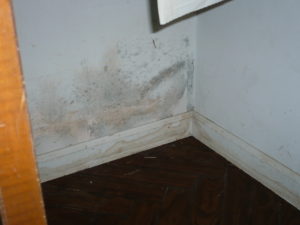New York Indoor Air Quality offers reliable mold testing, remediation, cleanup and removal for clients throughout Long Island. Testing for mold is important, because it is not something that is easily discoverable. And the ramifications of mold in a home or office building can have detrimental effects on your health.
Mold illness can be very scary. According to Surviving Mold, mold is composed of biotoxins the body cannot process. When these biotoxins enter the body, they can wreak havoc on the body, causing a range of symptoms. While symptoms may manifest differently in different people, it is wise to look out for the top 10 symptoms of mold illness, as outlined by Mayo Clinic. Keep reading to understand why this is important.
Mold illness is often misdiagnosed because many of the below symptoms are similar to those of other allergies. While the Asthma and Allergy Foundation of America explains some molds can, in fact, cause allergic reactions, Mayo Clinic urges people not to assume their sneezing and wheezing is mundane. It is important to talk with your doctor, especially if symptoms persist. This is because complications from mold illness can lead to asthma, sinusitis and inflammation of the lungs, among other issues.
 1. Sneezing
1. Sneezing
The most common symptom of mold is sneezing. Mold spores get into your body and irritate the nose and throat, which then causes you to sneeze. As you can imagine, many illnesses cause sneezing, which makes mold a tough one to nail down.
2. Stuffy or runny nose
When mold infiltrates your body, your immune system creates mucus to defend against the incoming mold spores in order to stop them. This causes the runny or stuffy nose.
3. Coughing
When you inhale mold spores, the lining of your throat gets irritated, which causes coughing fits. Longer exposure to mold in the home or office may lead to more severe symptoms, such as pneumonia and bronchitis.
4. Itchy throat, nose, & eyes
Mold triggers the human body into releasing histamine, which is exactly what pollen and other allergens do, too. Itchy eyes, nose and throat are the most common reactions of histamine.
5. Watery eyes
Another symptom of histamines is causing your eyes to water. When it comes down to it, histamines are simply chemicals in the immune system. They operate by flushing the allergens and other toxins out of your body. In some instances, histamines trigger watery eyes that push these allergens out.
6. Postnasal drip
A postnasal drip is another form of histamine reaction to remove the mold spores from your body. For noses that continue to run, the body’s immune system creates mucus. This mucus defends against the incoming spores and aims to prevent them from entering the body.
7. Dry skin
Irritation and/or inflammation of the skin is another common allergic reaction to mold in your home or office. This happens as a reaction to the allergen in your immune system and why prolonged exposure can even cause hives.
8. Wheezing
When you inhale those mold spores, they irritate and inflame the lining of your throat, the bronchial tubes and your lungs. By doing so, your airflow gets restricted, which then leads to the wheezing.
9. Shortness of breath
Often when you begin wheezing, you will also experience shortness of breath and difficulty of breathing. The severity is circumstantial of course. For those with asthma, mold exposure can cause more severe reactions, including a full-on asthma attack.
10. Tightness of chest
Many who get exposed to mold often claim to experience chest tightness and pain. Sometimes the tightness is simply a minor pressure. And the symptoms range from a severe pain to a small discomfort.
Professional Mold Inspection & Removal on Long Island
Mold is dangerous and not something you want lurking in your home or office. Mold can cause illness and produce debilitating side effects. With mold, it is important that you remove it as soon as possible. Our professional mold removal and cleanup team with ensure your home or office is free of mold. For good! There are certain signs of mold illness to help you decide if there is a problem or not. Learning and understanding these signs can lead to positive effects on your health. You can fill out our contact form and list your concerns or needs.
So please, do not hesitate to reach out today to learn more about our mold inspections and professional removal services. We will get back to you as soon as possible. When you reach out to us, we can further discuss what it is you need and go over the mold cleaning options with you. We provide our mold services for clients across Long Island, New York including many out east and in the following areas: Hampton Bays, West Hampton, South Hampton, East Hampton, Bridgehampton, Sag Harbor, Water Mill, Quogue and Amagansett. We are leaders in handling mold issues for those who live on the East End of Long Island.
